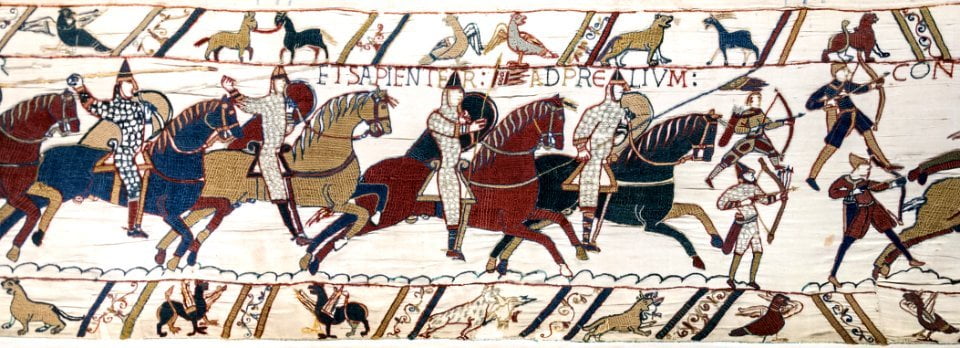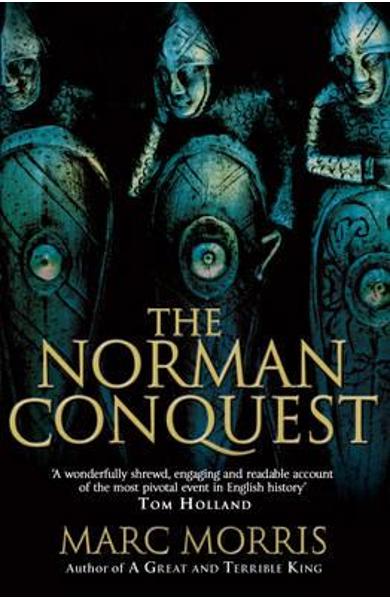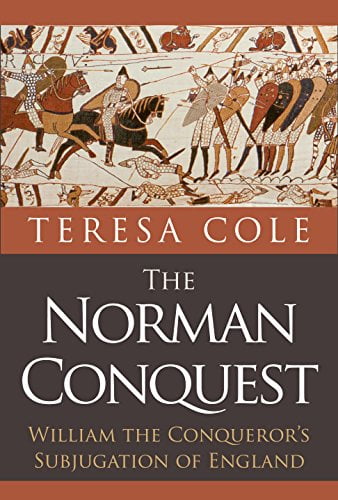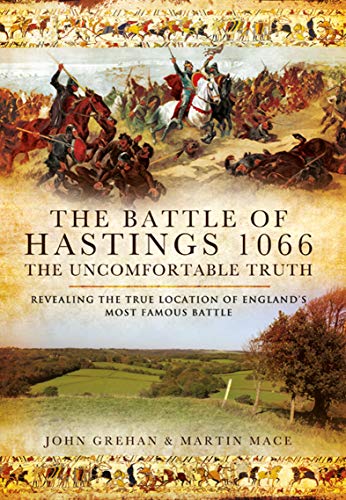
The battle of Hastings, 1066. It was a battle for the throne of England.
Harold Godwinson, the brave Anglo-Saxon king, faced William of Normandy, the cunning invader. They clashed at Hastings, in a fierce and bloody fight. Harold’s men held their ground forming a shield wall on the hill, but William’s knights and archers were too strong.
A fatal arrow pierced Harold’s eye and he fell to the ground. His men tried in vain to protect the king but soon lost hope and fled. William claimed the victory and the crown. Harold was buried in an unmarked grave, but history would not forget him.
Or so the story goes. Just how much of it is true though?
The Norman Conquest of England in 1066 is one of the most famous events in history. It changed the course of British politics, culture, and language forever.
But how much do we really know about what happened and why? What do historians agree on that tells us the story of William the Conqueror and his rival Harold Godwinson?
In the video above and this article, we will explore some of the myths and realities of the Norman Conquest and why historians have such a hard time telling us exactly what happened.
Historians Can’t Agree On What Happened At The Battle of Hastings
The Battle of Hastings was a decisive event in English history that took place on 14 October 1066. It was fought between the Norman-French army of William, Duke of Normandy, and the Anglo-Saxon army of King Harold Godwinson. It is known that Harold died in this battle and there is a famous image of him with an arrow in his eye on the Bayeaux tapestry. As we will see this may not be true. William’s victory led to the Norman conquest of England and the end of the Anglo-Saxon era.
Despite its importance, and the Norman conquest being widely covered in English school classes there are many aspects of the battle that historians still debate and disagree on. Here are some of them:
The Location Of The Battle Of Hastings
The traditional site is a hill near the town of Battle in East Sussex, where a Benedictine abbey was later built by William. However, some scholars have suggested alternative locations, such as Caldbec Hill or Crowhurst Park, based on geographical, archaeological, or historical evidence.
The Size Of The Armies During The Conquest
The exact numbers and types of soldiers on both sides are unknown and vary widely in different sources. Some estimates range from 5,000 to 15,000 for the Normans and from 7,000 to 13,000 for the Anglo-Saxons. The proportion of cavalry, infantry, and archers is also uncertain and disputed.
The Tactics Of The Battle
The chronicles and tapestries that depict the battle are often contradictory or incomplete. For example, there is no consensus on whether Harold was killed by an arrow in the eye, as shown in the Bayeux Tapestry, or by a sword blow to the head, as stated in some Norman accounts. There is also debate on whether the Normans feigned a retreat to lure the Anglo-Saxons out of their defensive position, or whether it was a genuine panic that William managed to restore.
The Impact & Consequences Of 1066
The battle is often seen as a turning point in English history that ushered in a new era of Norman rule and culture. However, some historians have argued that the battle was not as decisive as it seems, and that the Norman conquest was a long and gradual process that faced many challenges and resistance from the Anglo-Saxon population.
Further Reading On 1066 & The Norman Conquest
As always we have made a concise guide to the myths surrounding the Battle of Hastings. There are many books on the Norman Conquest, but here are some of the most popular and well-reviewed ones.

The Norman Conquest – Marc Morris
An upstart French duke who sets out to conquer the most powerful and unified kingdom in Christendom. An invasion force on a scale not seen since the days of the Romans. One of the bloodiest and most decisive battles ever fought. This riveting book explains why the Norman Conquest was the single most important event in English history.

The Norman Conquest: William the Conqueror’s Subjugation of England – Teresa Cole
1066 saw three kings of England, the last of whom was William, Duke of Normandy. Tradition tells us the conquest of England by the powerful Normans was inescapable, and suggests England benefited almost at once from closer links with Europe. But new discoveries have thrown doubt.

The Battle of Hastings 1066 – The Uncomfortable Truth – John Grehan Martin Mace
The Battle of Hastings is the most defining event in English history. As such, its every detail has been analysed by scholars and interpreted by historians. Yet one of the most fundamental aspect of the battle the place upon which it was fought has never been seriously questioned, until now.
